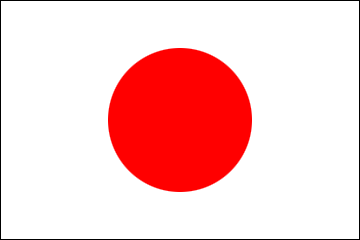Ms. Evelyn Lo - MEXT Research Studies at Keio University
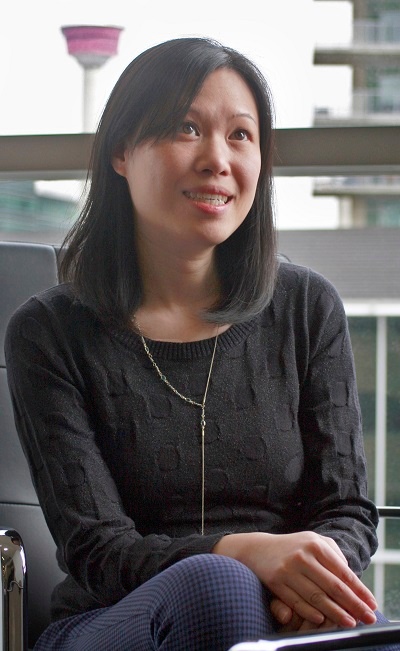
I first heard about the MEXT scholarship when I was an undergrad at the University of Calgary. One day, when I was volunteering at the Business School Library and chatted with another student volunteer, he commented that I should go and get this scholarship. I immediately responded that I was not good enough and there was no way that I would be picked. At that time, it was beyond my imagination that I would end up getting this scholarship one day.
The MEXT scholarship came to my attention again 6 years later. I had returned to Calgary after having the most amazing 3 years of my life as a JET participant, and I was very fortunate to have the opportunity to work at the Consulate-General of Japan in Calgary. I was responsible for managing the JET Programme. I was also overseeing the MEXT Scholarship applications, which allowed me to learn about the program from a different angle. I was quite amazed at the diversity of applicants and the area of study that they had chosen to pursue.
Meanwhile, I had developed an interest in Human Resource Management from my work experience, and I knew that I wanted to specialize in HR as my next career step. And as I began to understand the MEXT scholarship more, I knew that this is what I want to pursue to realize my next goal in life.
Applying for MEXT
Not long after I began thinking about applying to MEXT, there was a special round of MEXT recruitment for former JET participants. It was as if all the stars have aligned and it was a call for me to go for the scholarship.
I began to prepare my MEXT application and made sure that it was as perfect as it could be - I spent hours on developing a research plan and researched on business schools in Japan. I consulted friends and colleagues on graduate programs that I was considering. I found some strong references for my letters of recommendation.
I ended up being the only applicant in that round of MEXT recruitment at the Consulate-General of Japan in Calgary, and was quickly scheduled in to write the language test and interview.
Since I was working at an environment where I got to use my Japanese on a daily basis, I was confident about the language test. I was a lot more nervous about the interview and had spent quite some time preparing for it. I found the MEXT selection criteria to be vague for the Research Studies, likely because they cannot put in specific criteria when participants can do their research on any topic of their choice. Because of this, I made sure that I could confidently speak to my research plan and career plan during the interview, indicating my strong desire to do a study on Japanese-style management and how I’d like to help Japanese companies adapt their management style at their overseas offices.
Because I had applied to the special round of MEXT recruitment, I did not have to wait long for the results. A few weeks after my interview, I was informed that I had been accepted by Keio University, my first choice, and I would be leaving to go to Japan in a month. I was over the moon and was so glad (and relieved!) that I did not let down my whole office who was silently cheering for me.
Preparing for Departure
Immediately after I was informed of the results, I had to quickly plan my departure, as I had to leave my job but also leaving the country within a month! Luckily, since I was working at the Consulate-General of Japan, my office was well-aware that I was applying for the scholarship and it was easy to plan for my transition. I also had the luxury of being able to leave most of my belongings with my parents and that was a big help on short notice.
At the same time, I had to plan for my life in Japan. When I was accepted, I had been assigned an Academic Advisor, so I began to get in touch with him. I also got in touch with the MBA Program Administration Officer and made appointment to see both of them upon my arrival.
With living arrangements, The MEXT Program has assigned me to a dormitory that hosts their MEXT participants in Tokyo, which is awesome since I did not have to worry about looking for a place to live.
Life as a MEXT Research Student
On the day that I left for Japan, I left on the same flight as another MEXT participant; he was accepted to the program earlier in the year. We were assigned to dormitories within walking distance from each other, and we ended up accompanying each other on our first day while we looked for our rooms and got settled down, and to this day we are still friends.
To be honest, I was skeptical about getting assigned to a “student dorm” by MEXT at the age of 29. But, I was in fact lucky to have such a great arrangement. Although the dormitory was 40 years old, it was a well-built building and I had my own private room and bathroom. The location was also perfect – it was about 35-40 minutes to get to the two Keio campuses that I had to go to, which is very convenient by Tokyo standards. There were also a group of friendly staff at the office as well as Japanese Resident Assistants in the dormitory, and help was readily accessible whenever I needed it.
After living in the dorm for a few weeks, I also quickly noticed the biggest benefit of living at the MEXT dorm (aside from the price) – I was able to interact with other MEXT participants, and having a peer support network right where I lived was priceless.
Aside from the living arrangements provided by MEXT, I also received a monthly living expense, and it was a generous amount – It was sufficient for my basic living expenses, even when I had to move out of the dormitory and find my own living arrangements in the suburbs of Tokyo afterwards. That being said, it was helpful that I had my savings with me, since most students (myself included) ended up spending extra on things like socializing, travel and cool gadgets.
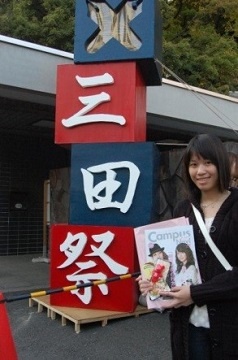
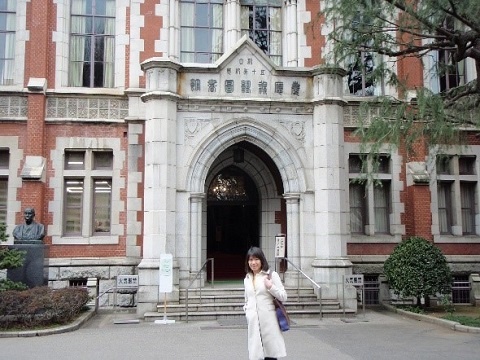
I was accepted by Keio University as a “Research Student” which means that I had not been admitted to their business school yet. My status as a MEXT Scholarship recipient did get me a pass into Keio’s degree programs - just like everyone else, I had to take their entrance examination and get accepted. So, my goal as a Research student for the first 6 months was to pass the entrance exam and enter Keio’s MBA Program.
Luckily, this school was very organized and experienced when it comes to receiving MEXT Research Students, and they made sure that I was taken care of. The Keio main campus conducted an assessment with me a few days after my arrival. After the assessment, they had concluded that I my Japanese level was sufficient, however I could take their Japanese language courses if I choose to do so. I did, mostly to help myself get adjusted to school life and to establish a routine while I prepared for the entrance exam.
At the same time, Dr. Takuro Yoda, my assigned Academic Advisor at the Keio Business School, introduced me to his students and even assigned one of them as my tutor. I met with my tutor about once a week and he would give me helpful advice on how to make my application more appealing and how I should prepare for the entrance exam. I took his advice and revised my application numerous times, spent time reading Japanese business news and articles, and practiced writing essays on business topics.
The first round of recruitment at the Keio Business School (KBS) after I arrived was in January 2009, approximately three months after I arrived.
I nervously submitted my application. A few weeks later, I was invited back to take a written exam and an interview.
Although I had a lot of encouragement from Dr. Yoda and my tutor, it was still a stressful experience as I had not written an exam for years. In the morning, I wrote a three-hour written exam with maybe 200 other applicants, which comprised of written essays on business topics. In the afternoon, I was in an interview with three professors from the Keio Business School. Coming out of the interview I felt fairly confident – I did not get any surprise questions and I thought I had answered the questions well. However, at the same time, I was very stressed while I waited for the results. If I did not succeed, I would either have to wait for the next round of recruitment at KBS, which was nine months away, or start applying to other schools.
After waiting for few days that seemed like forever, I received the results. I shed a tear of joy when I saw my examination number on the list. I was officially accepted to the MBA Program at Keio Business School for April 2009!
Meanwhile, Dr. Yoda looked after me and kept me busy. He had some administration work that he has hired me to do for one semester, and I helped out at his office once or twice a week. He also gave me some sample case studies to read at home, so I could get familiar with the MBA class assignments.
Life as a Graduate Student in Japan
On the first week of April 2009, I officially began life as an MBA candidate at KBS.
I started with the official opening ceremony at Keio’s main campus in Tokyo in the morning, followed by an orientation at Keio’s Hiyoshi campus where the business school is.
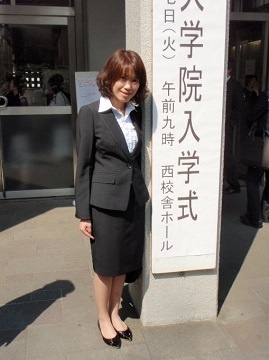
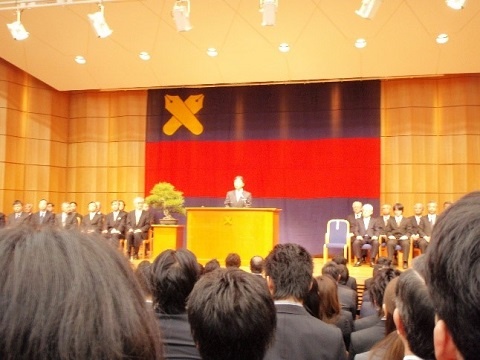
After we returned from the concentrated course, the workload was similar with our regular course work. We started at 9 o’clock daily and had two three-hour classes per day - half the time was spent on group discussions with our study group, and half the time was spent on class discussions in a class of 60. We were assigned at least two case studies each day that had to be read and completed for the next day. The courses were all conducted in Japanese, and not being a native Japanese speaker meant that I would have to spend extra time reading the case studies before I understood enough to do an analysis. However, the program has also ensured that we had the support that we needed. We had assigned study groups and this naturally made us get together in groups after classes to get through the work. I always had company when I had to stay at school until 9 or 10 in the evening, and I was always able to get help or discuss our analyses with other students when needed.
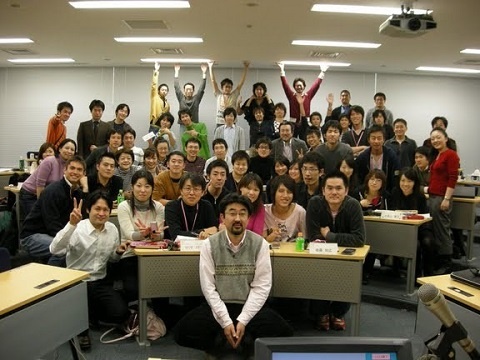
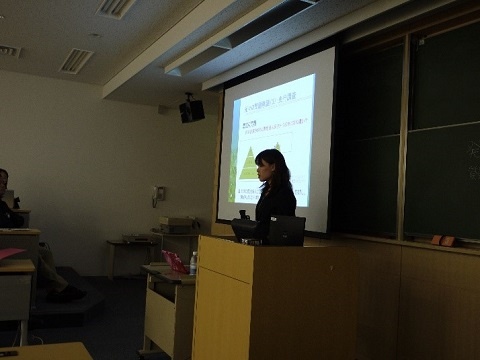
At the end of the year, each of us had to present our findings in a 25 minute presentation and answer all questions from students and professors – Getting a passing grade from three professors at this presentation means that I will be able to graduate. Since my school did not allow deferrals, not passing means that I would not be able to get my degree. Even though it was nerve wrecking, I felt quite accomplished and was very grateful for the chance to share my research results with the professors and students in person.
In February, I was notified that my Academic Advisor that my thesis was approved, and, in March 2011, I officially got my MBA degree from Keio University. MEXT was notified and I was given a ticket to return home shortly after my graduation.
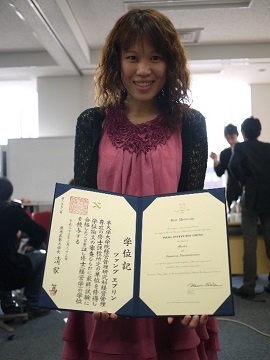
I was not only proud of my achievement as a MEXT participant, but I feel that I have benefitted from my experience long after I graduated. The methodology that I have used to conduct my thesis research is still one of the most valuable learnings that is useful to me in my career even today.
After returning to Canada, I found employment in the HR field at a firm specializing in contingent workforce management. Even though my present job is not Japan-related, my long term goal is to specialize in HR and organizational management so that one day I will be able to help Japanese companies who are looking to expand to Canada. Meanwhile, I try to stay active in the Japanese community in Calgary when I can, by being a part of the MEXT Alumni Association and attend events where I can spread word to the community about the MEXT Scholarship.
If you are looking to apply for the MEXT scholarship, be confident and go for it! It is truly a wonderful program if pursuing an academic interest is in your life’s plans, and I hope that more young people from western Canada will have the same fruitful experience that I once had.
